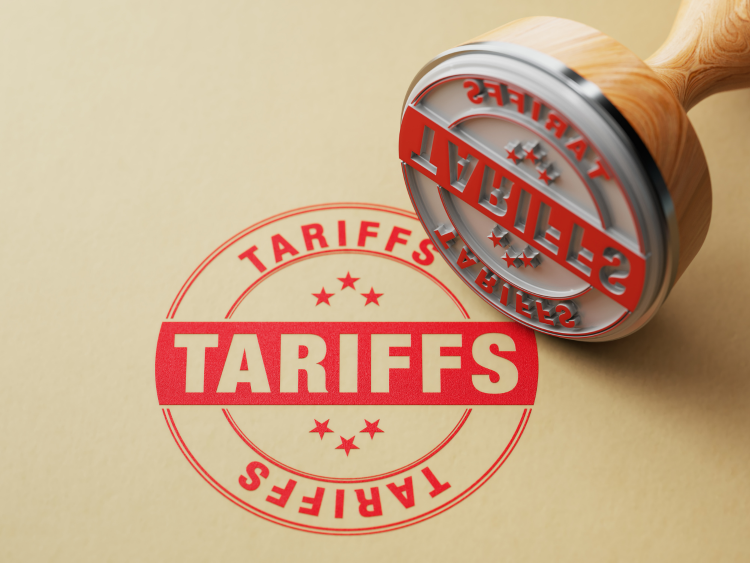
Over the past years, there has been a change in the global energy scenario toward sustainability; at the forefront has been the growth of green energy markets. The Renewable Revolution is epitomized by a large jump in the adoption of renewable sources of energy, which emanates from a mix of technological improvements, environmental awareness, and policy initiatives. It reviews the key drivers behind the growth of green energy markets, associated challenges, and possible future implications.
1. Technological Advancements
One of the main drivers of the Renewable Revolution is that renewable technologies themselves have been evolving very, very fast. Solar, wind, and energy storage technologies have developed very fast, therefore attaining better efficiency, cost reduction, and more viability for green energy solutions. For example, in just one decade, solar PV panel costs have come down drastically, democratizing access to solar energy and making its price competitive against traditional fossil fuels.
The next point that should be brought out is that technological advances in wind turbines make them more efficient and allow them now to capture wind energy in an expanded number of locations. Advanced energy storage in particular, new battery technologies helped counterbalance the intermittency of these renewable sources.
2. Increasing Environmental Awareness
Concerns voiced over climate change and environmental degradation have heightened and shifted public perception and corporate responsibility. People and businesses are becoming more sensitive to the environmental impact traditional sources of energy have and look actively for cleaner alternatives. Raised awareness has spilled over into a surge in demand from consumers and corporations alike in reducing their carbon footprint through renewable energy.
Governments around the world are worried about environmental deterioration and are implementing policies that encourage the use of renewable energy. Incentives range from tax credits and subsidies to renewable portfolio standards, which as a whole encourage the development of green energy sources and their integration into existing infrastructures that generate power.
3. Policy Initiatives and Regulations
Government policy and regulatory frameworks guide the path of green energy markets. Ambitious targets are already set by several countries to increase the contribution share of renewable energy in their overall energy mix. The Paris Agreement aims to keep global warming well below 2 degrees Celsius above pre industrial levels, which was signed by many nations and further underscores the need for a transition to clean energy.
Governments offer subsidies and feed-in tariffs to encourage businesses and individuals to finance renewable energy projects. Besides, they set up regulatory frameworks that can assist in grid integration, providing for easier connection of the renewable system to a grid and hence expanding green energy markets.
4. Economic Viability
As much as the tech progression tends to reduce renewable energy costs, these sources are becoming economically much more viable. This cut down has come at an unprecedented reduction where, in most regions, it's now cheaper or near cost competitive with traditional fossil fuels with a reduced LCOE for both solar and wind powers.
Investors and financial institutions now recognize the economic potential of renewable energy projects. As a result of this surge in investments, decreasing renewable energy technology costs interacted with positive financial conditions to create enabling environments for green energy markets to grow.
Challenges and Barriers
Despite the remarkable progress made in the renewable energy sector, several challenges and barriers persist that could potentially hinder the full realization of the Renewable Revolution.
1. Intermittency and Reliability
The main challenge to renewable sources of energy is that most of them are not available on demand. Solar and wind generation depends on weather conditions, which means that energy production is variable. The challenge of intermittency can only be overcome through advanced energy storage technologies and a much more resilient and flexible power grid.
2. Infrastructure and Grid Integration
One of the most complex tasks is to integrate renewable energy streams into an already existing power network. In most areas, no infrastructure is available to accommodate renewable energy generation that is variable in space and time. The rise in capacity and variability of the green sources of energy are calling for an upgrade in the power grid so that transition to a more sustainable energy system is done on as seamless a path as possible.
3. Initial Costs and Investment
Even though the long term economic viability looks bright for renewable energy, the upfront costs associated with the execution of green energy projects are capable of forming a barrier, especially to developing economies. Government policies and access to finance could be critical in transgressing initial cost barriers to the adoption of such energies.
4. Political and Economic Uncertainty
If not managed appropriately, political and economic instability can finally pose a threat to the growth of the green energy markets. Changes in government policy, fluctuations in energy prices, or simple downturns in the economy can taint the investment climate that prevails over renewable energy projects. In that way, a stable and supportive policy environment has to be created if the renewable energy sector is to achieve growth that is sustained.
Future Implications
The continued growth of green energy markets has far reaching implications for the future of the global energy landscape, the environment, and the economy.
1. Energy Independence and Security
The more countries rely on renewable sources of energy, the less they will become dependent on energy from finite and geopolitically sensitive fossil fuel reserves. This contributes to heightened energy security and reduces geopolitical tensions related to traditional energy sources.
2. Job Creation and Economic Growth
The Renewable Revolution is intrinsic to job creation and thereby driving economic growth. Growth in renewable energy projects and manufacturing along with associated industries has created new jobs and thus fueled economic development. As the green energy sector grows, so will its input into sustainable economic prosperity.
3. Environmental Benefits
Widespread renewable energy adoption would imply reductions in GHG, air pollution, and other environmental hazards linked to the combustion of fossil fuel. This speaks to the positive environmental implications that would help reduce climate change and improve the quality of the environment for current and future generations.
4. Technological Innovation
The Renewable Revolution means continuous technological innovation in the Energy Sector. The research and development that has been underway is in renewable energy technologies; the advancements driven for green energy are making it ever more efficient and inexpensive, opening up further possibilities for clean energy solutions.
Conclusion
This marks a transformative period in the world's energy landscape: powered by innovative technology, rising environmental awareness, and enabling policies at the government level, it is reshaping how societies produce and consume energy. While there are still technical challenges to be overcome, the long term benefits of energy security, jobs, and environmental sustainability make the requirement to further invest in, promote, and take up renewable energy sources very imperative. In a climate constrained world heading ever more rapidly toward a livable future, it certainly is the Renewable Revolution that lights the star of hope and progress.
Trending Posts

Global Silver Nanoparticles Market
The global silver nanoparticles market was valued at $2.08 billion in 2020, and is projected to reach $4.1 billion by 2027, growing at a CAGR of ~17%

The Basic Pension Comes - Federal Cabinet Decides On the Pension Supplement
Financial security in old age is an issue that is causing stomach pains for more and more people in Germany. Low-wage earners fear the elderly. The ba

The Future of Artificial Intelligence
In recent years, the field of artificial intelligence (AI) has witnessed unprecedented growth and transformative advancements. As AI technologies

"LNG Bunkering" Here is something you must know!
In the current scenario of growing pollution, companies are trying to adapt more and more sustainable approach that not only gives eco-friendly result

Sailing into the future with Autonomous Ships
Autonomous Vehicles (AVs) are the uproar of this era. After airways, thanks to the companies like Tesla, that people are now getting used to see drive

Rising Demand For Uninterrupted Power Supply Is Expected To Drive The Power Rental Market
Todays world is totally reliant on electric power. There are many things which are not manageable without electricity. Power rental is a concept where

Rapidly growing IT industry coupled with the trend of bringing your own device (BYOD) is expected to provide new opportunities for growth of Cloud Collaboration
Cloud collaboration is the process of sharing and co-authoring the computer-based work through cloud technology

Fact check on UV Disinfection for COVID-19
Many regulatory authorities and bodies believe that UV disinfection technologies can play a role in a multiple barrier approach to reducing the transm

Vaccination: Vaccination Against Measles is Now Mandatory in Germany
The subject of compulsory vaccination has always heated peoples minds and caused emotionally charged discussions. The latest law in this area - the ob

The Global Ventilator Market Grows at a CAGR of 7.75 %
The Global Ventilator Market, which was at $688 million in the year 2016, is about to double by the year 2025, and reach a value of $1,347 million. Th
Recent Posts

Tariffs & Trade: Key Trends, Policies, and Market Impact
A tariff is a tax imposed by a government on imported or exported goods. It is primarily used to regulate international trade by either encouraging domestic production or generating revenue for the government.

The Global Buy Now Pay Later (BNPL) Market: Growth and Opportunities
The global Buy Now Pay Later (BNPL) market has emerged as a revolutionary financial solution, transforming how consumers approach shopping and payments. Offering flexibility and convenience, BNPL allows consumers to make purchases and pay.

Global Motorhome Market: Growth and Forecast
The motorhome market has gained significant momentum over the past decade, driven by rising interest in outdoor tourism, evolving consumer lifestyles, and advancements in vehicle design and technology. As a preferred option for travelers seeking.

The Global Poppy Seed Market: Growth and Trends
Poppy seeds, derived from the opium poppy plant (Papaver somniferum), have been a vital component in global culinary, pharmaceutical, and personal care industries for centuries. The global poppy seed market is gaining traction due to its versatility.

Global Plant Breeding and CRISPR Plants Market
The global food industry is facing immense pressure due to rising population levels, diminishing arable land, and the impact of climate change. Innovations in plant breeding, particularly the use of CRISPR technology, are reshaping the agricultural .

Global Pheromones Market – Trends, Opportunities, and Forecast
The global pheromones market has witnessed significant growth, primarily driven by the rising demand for eco-friendly pest control solutions in agriculture. Pheromones, natural chemicals emitted by insects and other organisms to communicate.

The Role of Technology in Oil and Gas Risk Management
In an industry as dynamic and complex as oil and gas, risk management is crucial for ensuring operational efficiency, regulatory compliance, and safety. Risk management software has become an indispensable tool for companies in this sector.

Global Smart Grid Sensors Market
The global energy landscape is undergoing a significant transformation, with smart grid technologies at the forefront. Smart grid sensors, a critical component of modern energy grids, enable efficient monitoring, energy distribution.

Global Photovoltaic Glass Market Research Report
The global photovoltaic (PV) glass market is experiencing unprecedented growth, driven by the accelerating shift towards renewable energy and the integration of sustainable materials in construction. This report delves into the market’s key growth.

Exploring the Growth of the Global Micro Solar Inverter Market
The Global Micro Solar Inverter Market is forecasted to expand significantly, growing from an estimated value of USD 4.8 billion in 2024 to USD 14.6 billion by 2030, with a CAGR of 24.2%. This growth reflects increased adoption of solar energy system
.png)